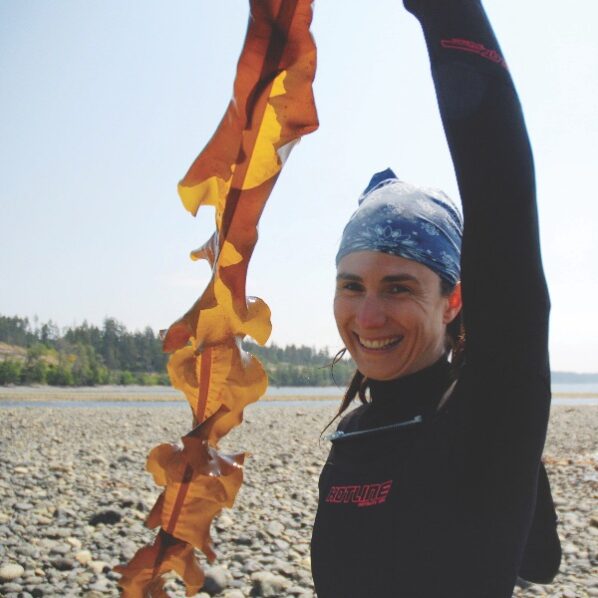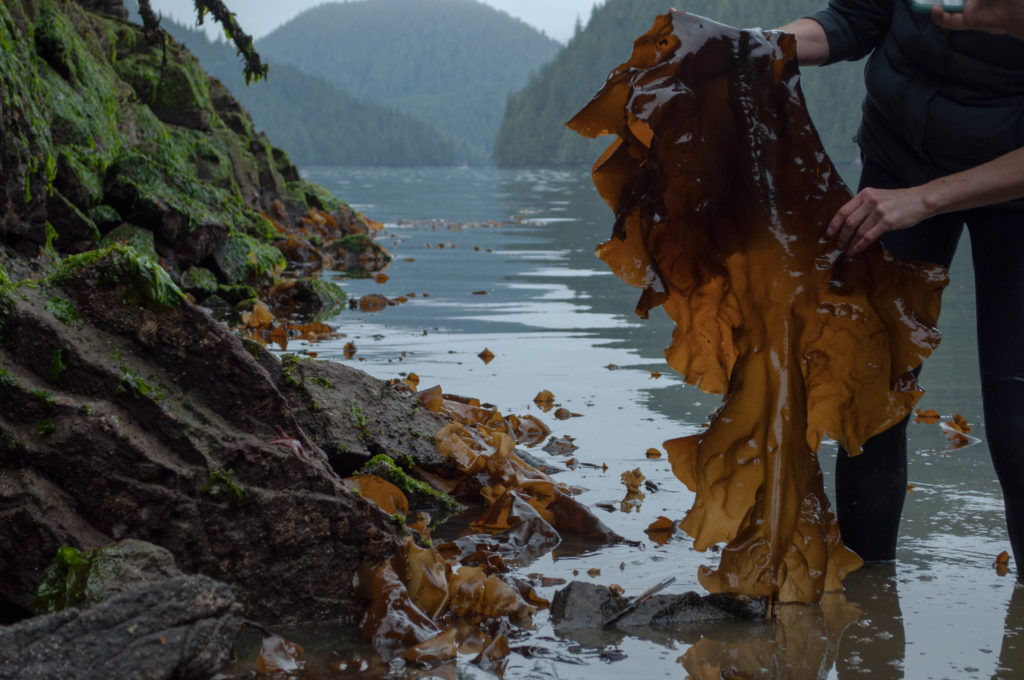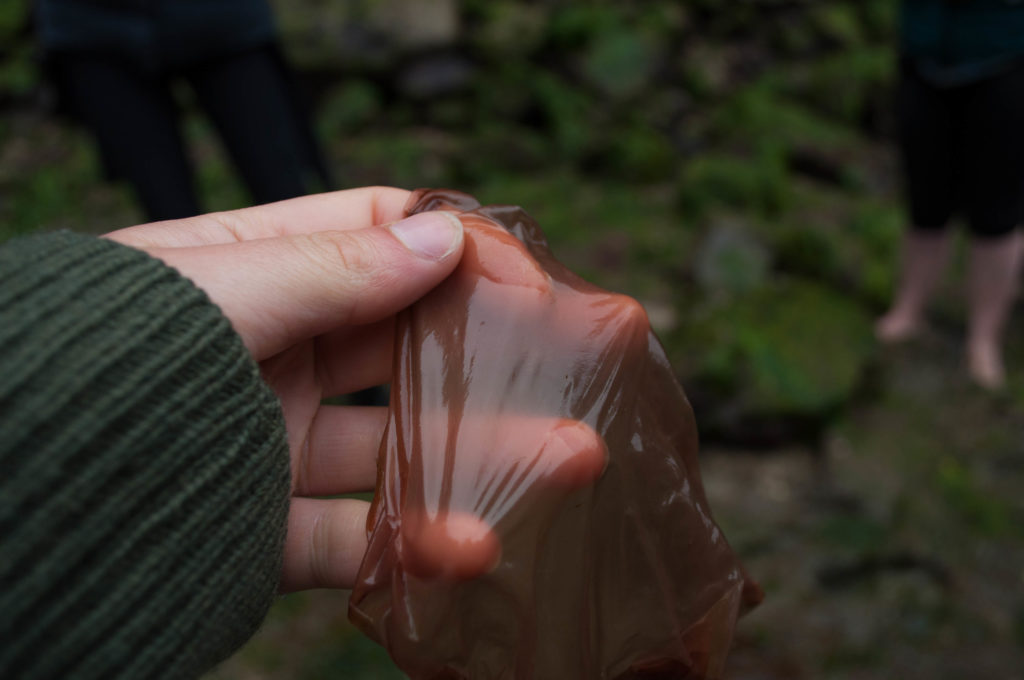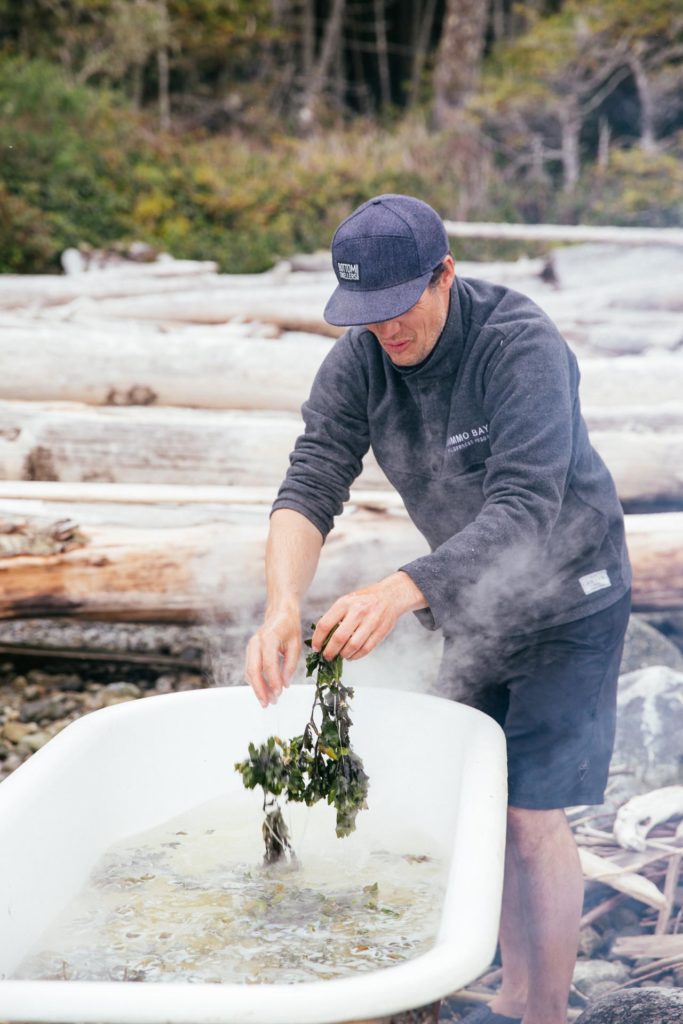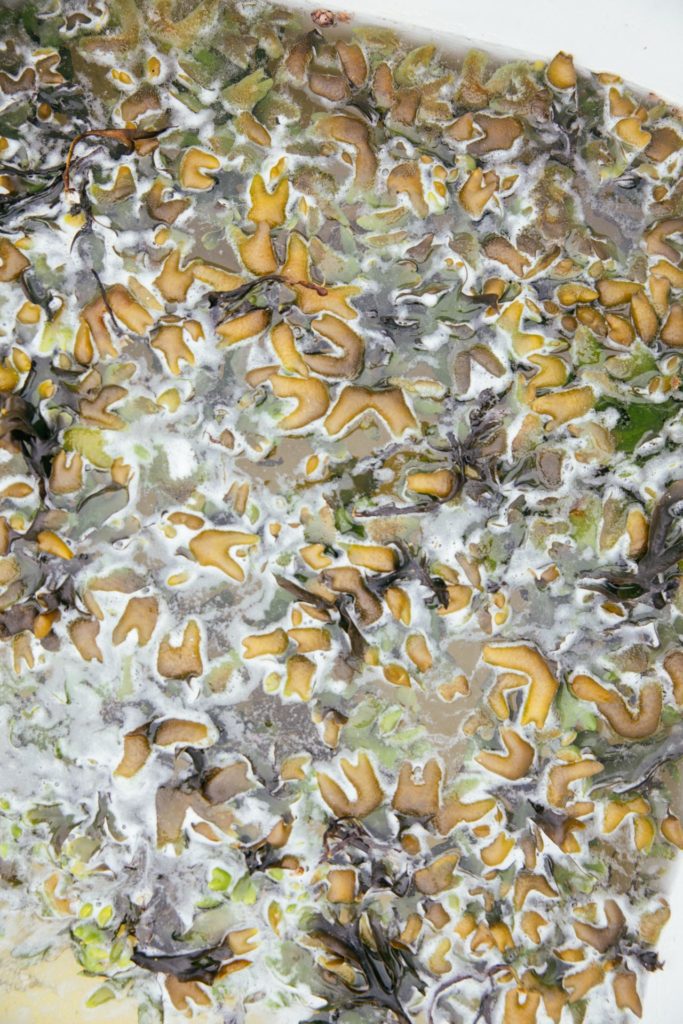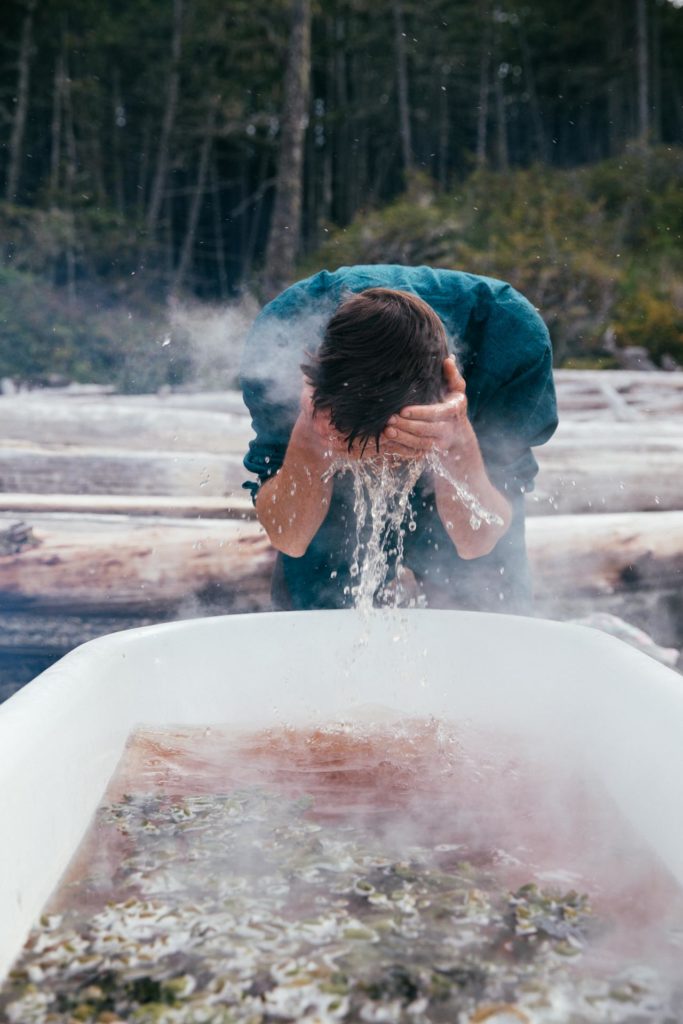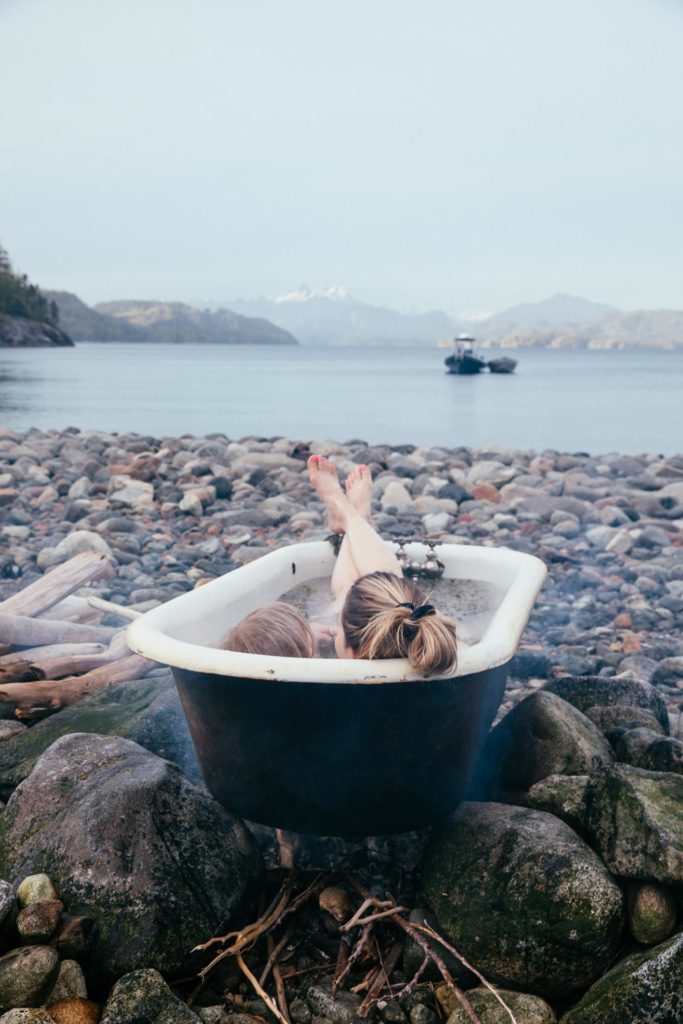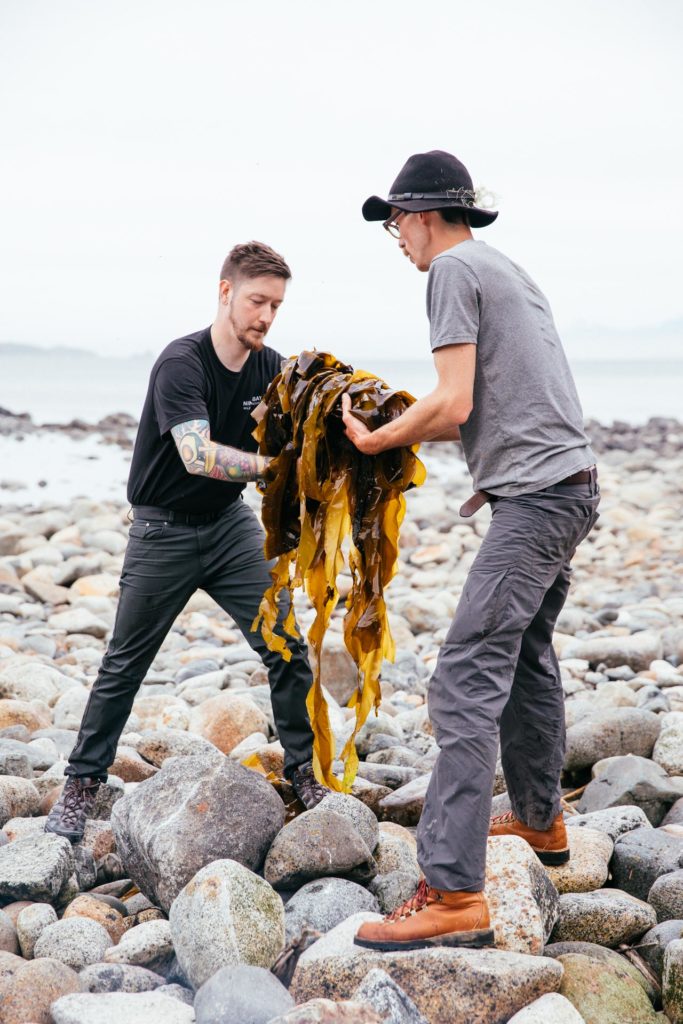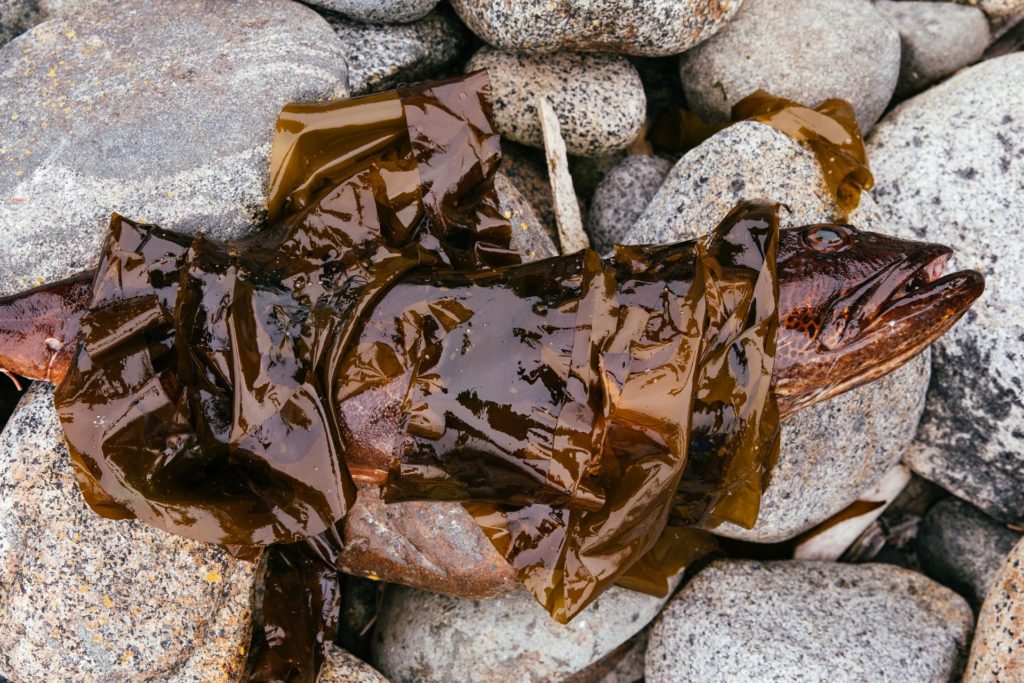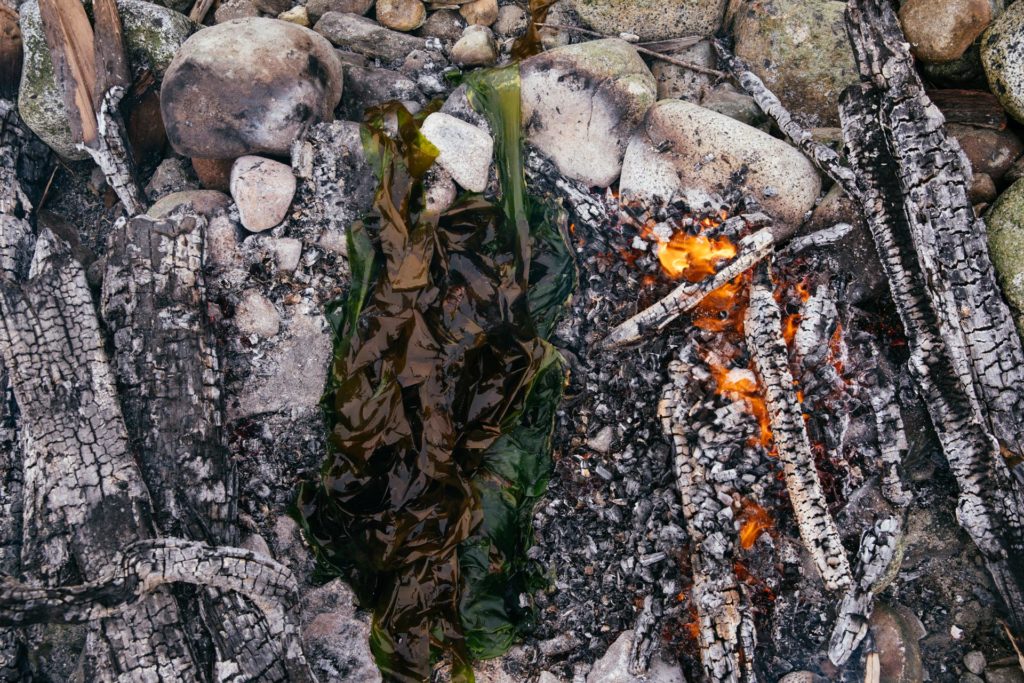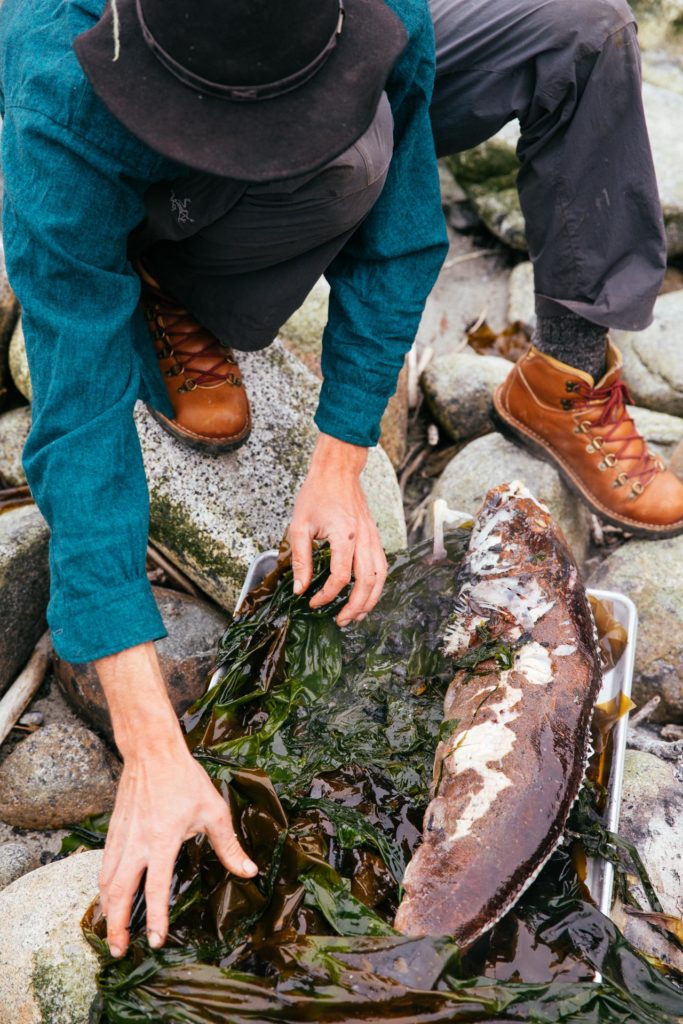Did you know…
- The Pacific Northwest has the greatest cold-water seaweed diversity on the planet, with an estimated 640 species?
- Algae produces more than half of the world’s oxygen?
- One of the best ways to absorb the nutrients of seaweed is through the skin?
- Fucoidan, found in some of brown seaweeds, has been shown in studies to have anti-cancer qualities?
- The jellylike liquid in Rockweed ‘pods’ contains sodium alginate and can be used as a natural sunscreen?
These were just a few of the many facts our team learned about the wonderful world of seaweed from Amanda Swinimer when she visited us at Nimmo Bay in June.
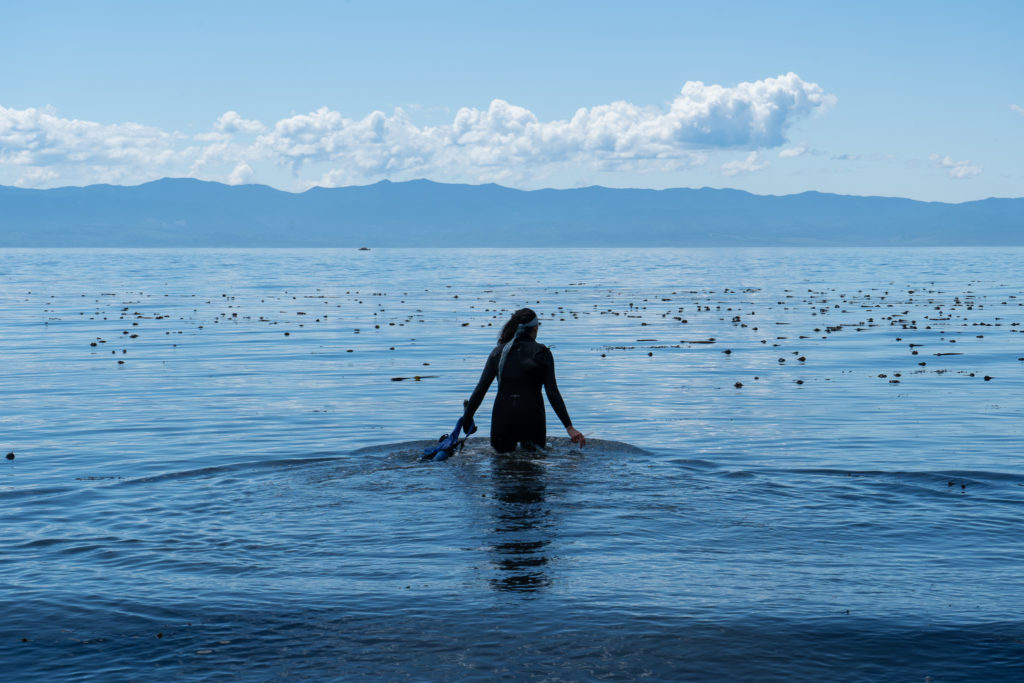
Amanda Swinimer completed her BSc+ at Dalhousie University with an advanced major in Marine Biology, before the call of the ocean brought her to Vancouver Island. Along the coast and within the cold clear Pacific Ocean, she came to find a habitat producing some of the world’s best seaweed; a thriving and abundant ecosystem. In 2003, Amanda started her business, Dakini Tidal Wilds, harvesting fresh seaweed and selling dried products, seaweed-based teas and wild-crafted medicines online and through local markets.
The harvesting season for local Winged and Bull Kelp runs from April to August. Pruning the kelp by hand, either by foraging at low tide or snorkelling, she then dries and packages it herself. This is the busy season for Amanda, however, she still finds time to share her knowledge and contagious passion for seaweed through workshops, snorkelling tours and hands-on harvesting excursions.
Nutritious and delicious, seaweed is one of the wild foods attracting the interest of local foragers and chefs. With a unique taste, this versatile and sustainable superfood is one of the most nutritionally dense foods available. It can also be used in a variety of creative ways, showcasing its many wonders.
Amanda Visits Nimmo Bay
There is a bounty of seaweed flourishing along the coast and at our doorstep …
On the first morning, the group set out at low tide and ventured up the bay in search of wild edibles. Erika, our Kitchen Flex and Garden Lead, noted that it was interesting to learn how variable the species could be between the bay’s low exposure tidal environment compared to the higher exposure tidal environment they visited the following day. Just a short boat ride away, at Roaring Hole Rapids, they came across various seaweed species, including Red Nori, which was surprising and rare. More abundant species throughout the region included: Rockweed (Fucus Gardneri), Sugar Kelp (Saccharina Latissima) and Sea Lettuce (Ulva Lactuca).
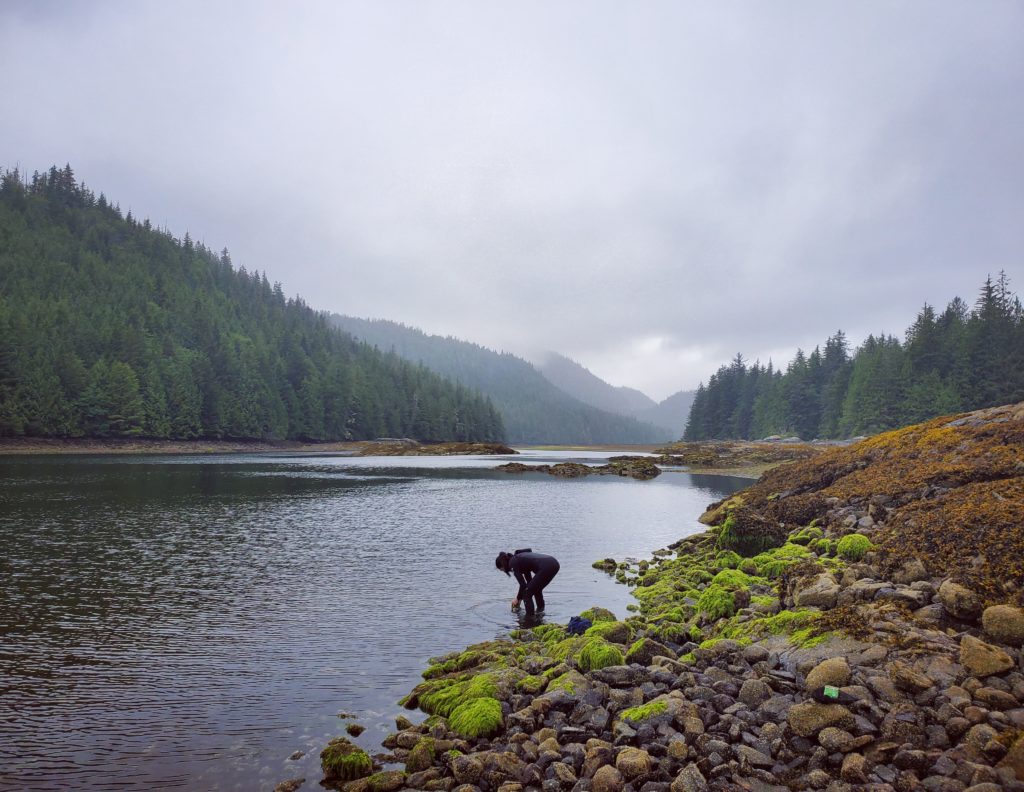
“What stuck out to me then, was the care and intention Amanda put into each piece of seaweed she touched, being careful to harvest responsibly, and take in a way so that the plant could continue to reproduce.” – Sarah, Head of Wellness
Amanda also prepared an interactive workshop for our team, where they could taste and feel different types of seaweed. A member of the algae family, seaweed (not actually a weed, but a type of sea-vegetable) is classified into three groups: red, green, and brown. Amanda explained this and from there, broke down her teachings into specific species. For each species, she discussed seasonality, reproductive cycle and method, habitat (high tidal/intertidal/low tidal), edibility (which is very much affected by stage of reproduction), nutritional information, medicinal uses, spa uses, sustainable harvesting techniques and more.
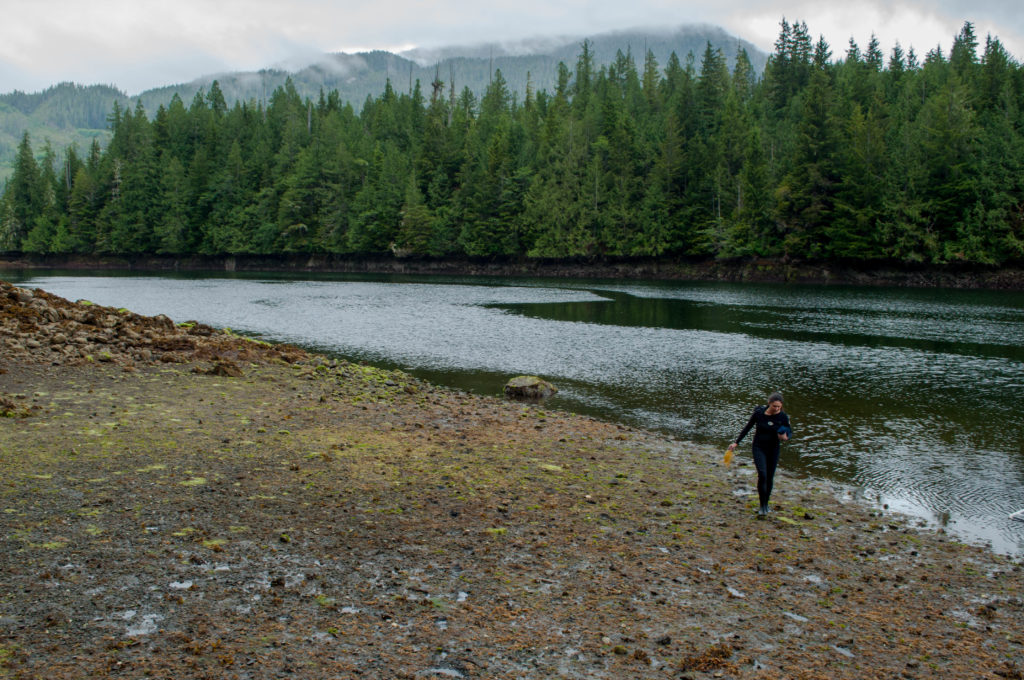
“I’m very interested in foraging and would like to be able to integrate seaweed into my knowledge base and I would like to learn more about the Indigenous cultural importance of seaweed. I found Amanda humble and passionate and she inspired me to expand my knowledge even further.” – Erika, Kitchen Flex & Garden Lead
The Rockweed of the intertidal zone around Nimmo Bay was in absolute abundance, preferring the rocky terrain found here. This particular seaweed is distinguished by the pods at the ends of mature branches. It is edible and offers incredible skin absorption abilities. Amanda suggested that the best way to enjoy its health benefits is to bathe in it – when exposed in freshwater (rather than the saltwater it is used to) the cell membranes burst and release the nutrients.
At Nimmo Bay, seaweed is also used regularly on our tasting menus and at beach cookouts, giving our food a wonderful sense of place. Wrapping a freshly caught fish in Bull Kelp and pit-cooking it on the beach is a truly memorable, and tasty, west coast experience!
Please note that education is key when harvesting.
Harvest in a way that is sustainable so that seaweed can continue to grow and regenerate. Seaweed species are all different – learn about your local species and best harvesting practices.
